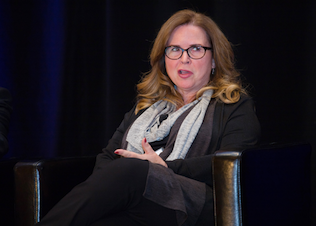

With many of its plan members based in Alberta, the manager of Mercon Benefits Services was hoping to stay ahead of longer-term issues resulting from a turbulent provincial economy when she decided to take a deeper dive into projected benefits costs in 2015.
In the short term, the outlook appeared relatively rosy, with plan costs forecast to rise by just 1.3 per cent.
However, the deeper dive into the data revealed that claims for chronic, recurring conditions were replacing a drop in spending on acute specialty treatments, raising alarm bells about the long-term sustainability of the plan.
“If we had relied on the reports we get internally and from out insurer, then we wouldn’t have seen what was coming,” says Sue Gent, benefit services manager at Mercon, which administers the benefits plan for a collective of 2,000 employers in the construction industry with a combined 60,000 workers. Gent spoke during a session at Benefits Canada‘s Face to Face Drug Plan Management Forum in Toronto on Thursday. “We had no idea what was going on.”
Read: Arbitrator upholds employer’s move to cut down on pharmacy visits
Based on other intelligence gleaned from claims data and projections, Mercon made three major changes to its drug plan:
- First, it changed its definition for an eligible drug, instituting an assessment process for new treatments before their addition to the formulary.
- Second, Mercon modified its prior authorization process, moving to disease state-based approach.
- Finally, the organization made changes at the distribution end, modifying dispensing frequency to lower costs.
Within four months, the plan had seen more than $600,000 in savings.
“That’s money that can now be used and flow into different avenues or used as a contingency to keep the plan as open and sustainable as possible,” said Mike Sullivan, chief executive officer and cofounder of Cubic Health Inc., who spoke along with Gent during a session at Thursday’s event.
He said Mercon’s example is a good one for other plan sponsors to follow, especially those with worries about their ability to successfully execute a change.
Read: Drug Plan Trends Report: Alarm about costs sparks ‘monumental shift’
“Size and complexity are often used as excuses for being unable to do anything,” said Sullivan. “A plan of 2,000 employers across the country has a lot of moving parts, but a plan this size can do something if there’s the will and the understanding of what to do.”
Gent said she was pleasantly surprised by her board’s enthusiasm for the project, as well as the positive reception from member companies and their employees.
“Taking action isn’t as hard as you think,” she said.
